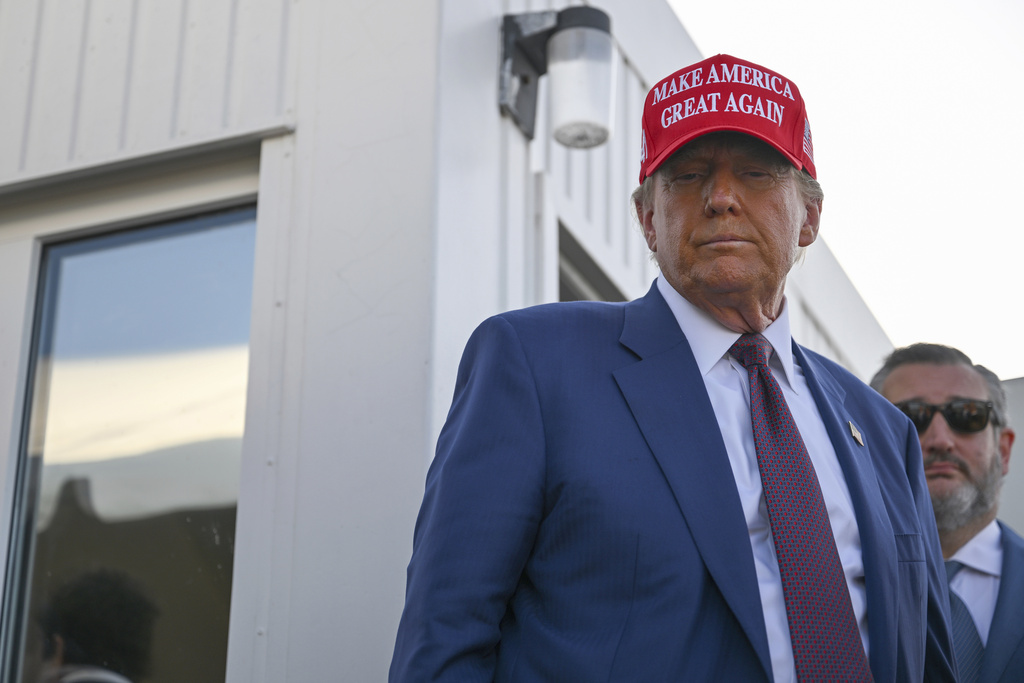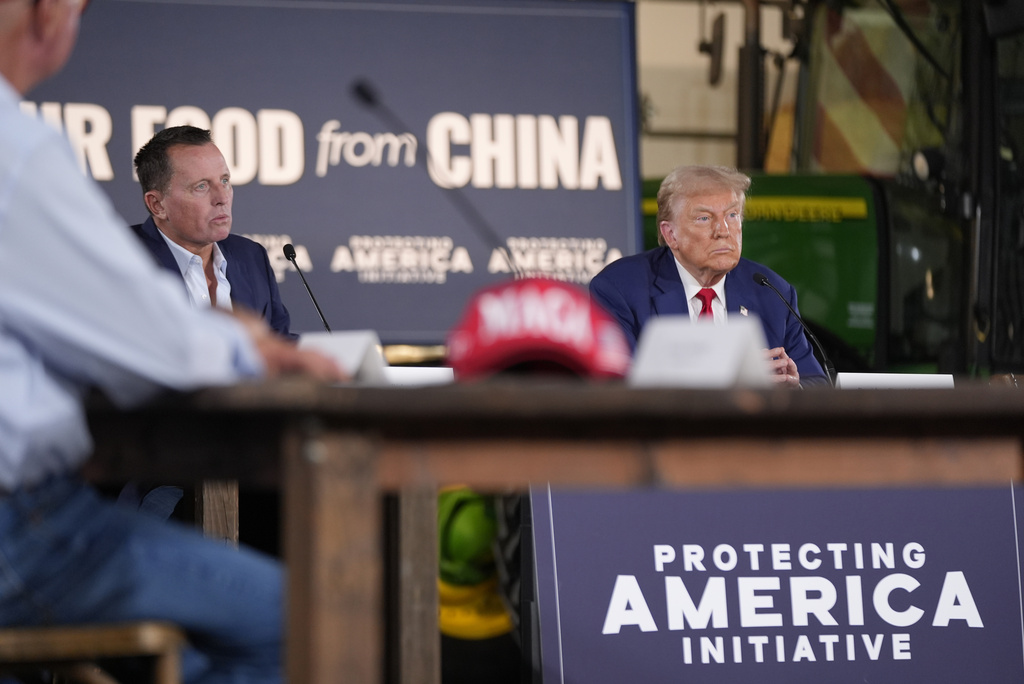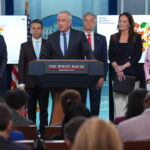Trump tariffs/ USMCA trade agreement/ Canada tariffs/ Mexico tariffs/ China trade war/ fentanyl crisis/ NEW YORK/ Newslooks/ J. Mansour/ Morning Edition/ President-elect Donald Trump plans to impose sweeping tariffs on Mexico, Canada, and China upon taking office. The proposed 25% tariffs on Mexico and Canada, along with a 10% tariff on Chinese goods, aim to address illegal immigration and drug trafficking. Critics warn that these tariffs could drive up costs for American consumers, jeopardize trade agreements like USMCA, and strain relations with key trade partners.

Trump’s Tariff Plans: A Breakdown of the Bold Proposals
Quick Looks
- Sweeping Tariffs: 25% on Mexico and Canada, 10% on China starting Jan. 20.
- Targeting Drugs and Migration: Trump links the measures to fentanyl trafficking and immigration control.
- Economic Impact: Potential price hikes on goods and disruption of trade with major U.S. partners.
- Global Reactions: Pushback from Canada, China, and Mexico; diplomatic concerns raised.
How Trump Tariffs on Mexico, Canada & China Could Affect Your Budget?
Deep Look
President-elect Donald Trump on Monday announced his intention to levy sweeping tariffs on Mexico, Canada, and China immediately upon his return to the Oval Office. This aggressive trade policy, Trump says, is aimed at combating illegal immigration, drug trafficking, and fentanyl smuggling into the United States.
In a series of posts on Truth Social, Trump detailed his plans:
- 25% Tariff on All Goods: Imported from Mexico and Canada.
- 10% Tariff on Chinese Products: An additional tax targeting what Trump alleges are insufficient Chinese efforts to curb fentanyl trafficking.
A Tough Stance on Trade and Borders
He accused Canada and Mexico of failing to address what he described as a “border invasion” and “crime and drugs at levels never seen before.” Although illegal border crossings are near four-year lows, Trump remains adamant that tougher measures are needed.
China also came under fire. Trump claimed to have had “many talks” with Beijing about fentanyl smuggling but stated that efforts have failed to curb the crisis.
“These tariffs will stay until they fix these problems,” Trump wrote.
Trade and Tariffs: The Numbers
- Raise consumer prices on products like food, automobiles, and electronics.
- Strain the USMCA trade agreement, which governs commerce with Mexico and Canada.
- Risk retaliatory tariffs, echoing trade disputes during Trump’s first term.
According to the U.S. Census Bureau, the three countries account for a significant portion of U.S. trade:
Reactions From Trade Partners
The announcement provoked immediate reactions from U.S. trade allies.
Canada
Canadian Prime Minister Justin Trudeau reportedly spoke with Trump following the announcement. Canadian officials expressed concerns over potential economic fallout.
A senior official emphasized the importance of balanced trade relations, stating:
“Canada places the highest priority on border security and the integrity of our shared border.”
The Canadian dollar weakened in foreign exchange markets following Trump’s announcement.
China
China’s Embassy in Washington urged caution, warning of the risks of a trade war:
“No one will win a tariff war,” said Embassy spokesman Liu Pengyu.
China also highlighted its recent efforts to combat fentanyl trafficking, which U.S. officials have acknowledged but Trump dismissed as insufficient.
Mexico
Mexico’s government did not immediately issue a formal response. However, officials hinted that such tariffs could provoke retaliatory measures, straining U.S.-Mexico relations further.
Economic Risks and Inflation Concerns
Trump’s tariff plans could undermine his campaign promise to curb inflation. The tariffs are expected to raise prices on imported goods, including gas, automobiles, and consumer products.
Economists warn that inflationary pressures could force the Federal Reserve to keep interest rates higher for longer, which would increase borrowing costs for American consumers and businesses.
Scott Bessent, Trump’s treasury secretary nominee, defended tariffs as a tool to achieve foreign policy goals but acknowledged they could have short-term economic impacts.
The Political and Diplomatic Fallout
The announcement puts trade agreements like the United States-Mexico-Canada Agreement (USMCA) in jeopardy. The 2020 trade deal, a hallmark of Trump’s first term, is set for review in 2026.
Additionally, the move could escalate tensions within Congress, where bipartisan concerns about tariffs’ economic impacts are likely to emerge.
A Broader Context
- October 2024: 56,530 border arrests, down from over 175,000 the year prior.
What’s Next?
As Trump prepares to take office in January, his aggressive trade policy is likely to dominate early discussions with Congress and global leaders. Observers are watching closely to see how:
- Trade Partners React: Will Canada, Mexico, and China offer concessions to avoid tariffs?
- Markets Respond: Could financial markets experience volatility in anticipation of trade disruptions?
- The White House Acts: Will Trump use these tariffs as negotiating leverage or push forward with implementation?







